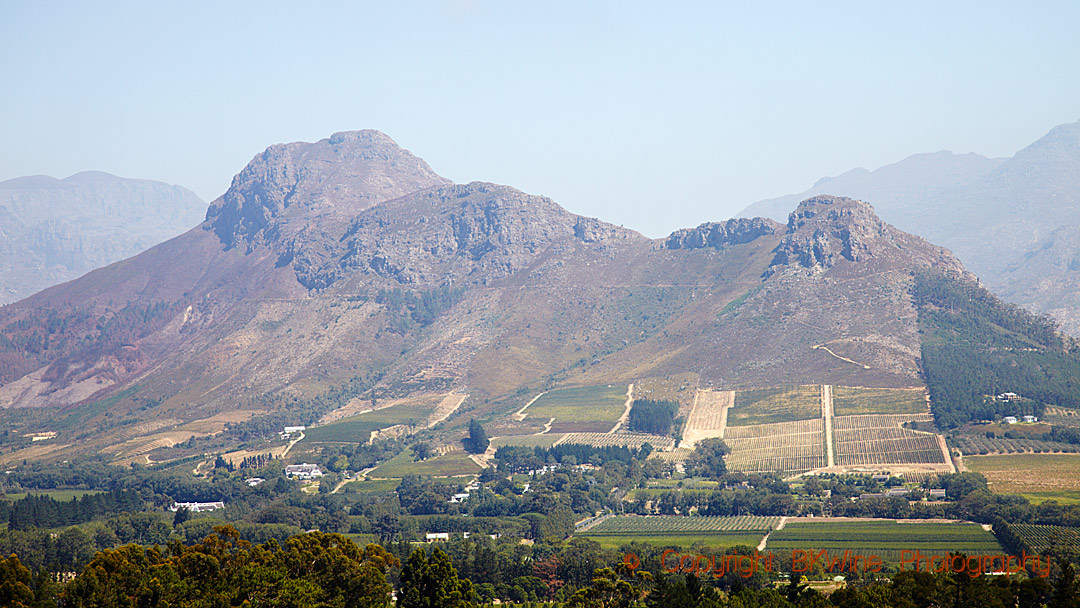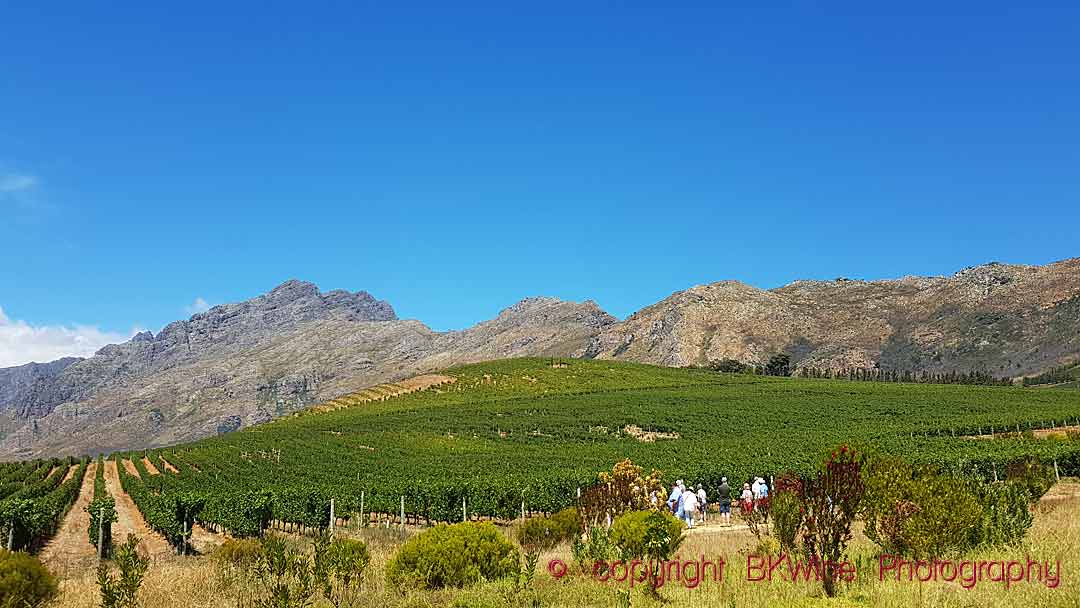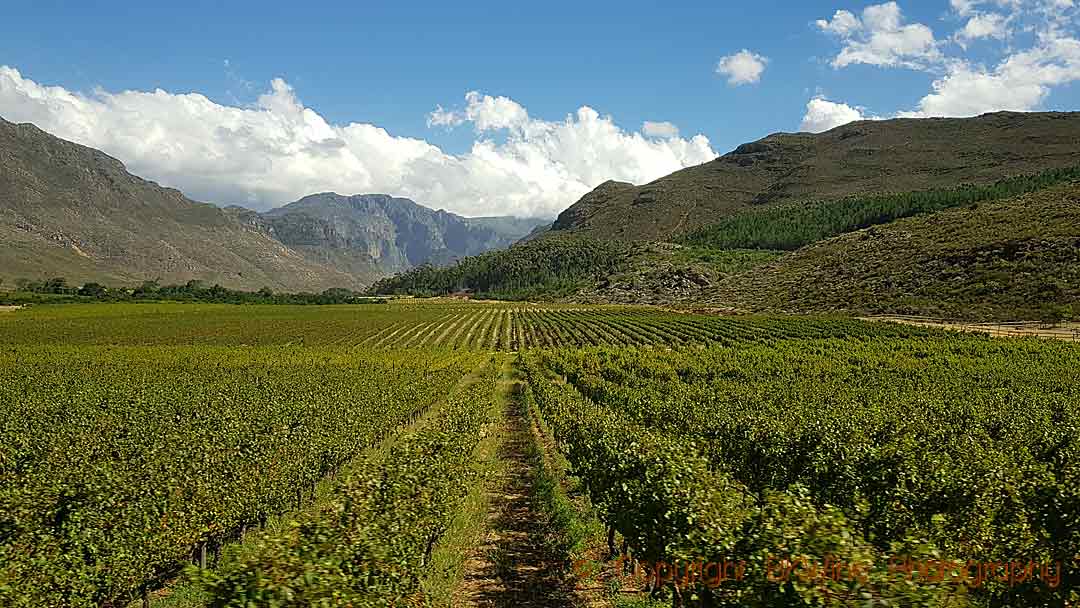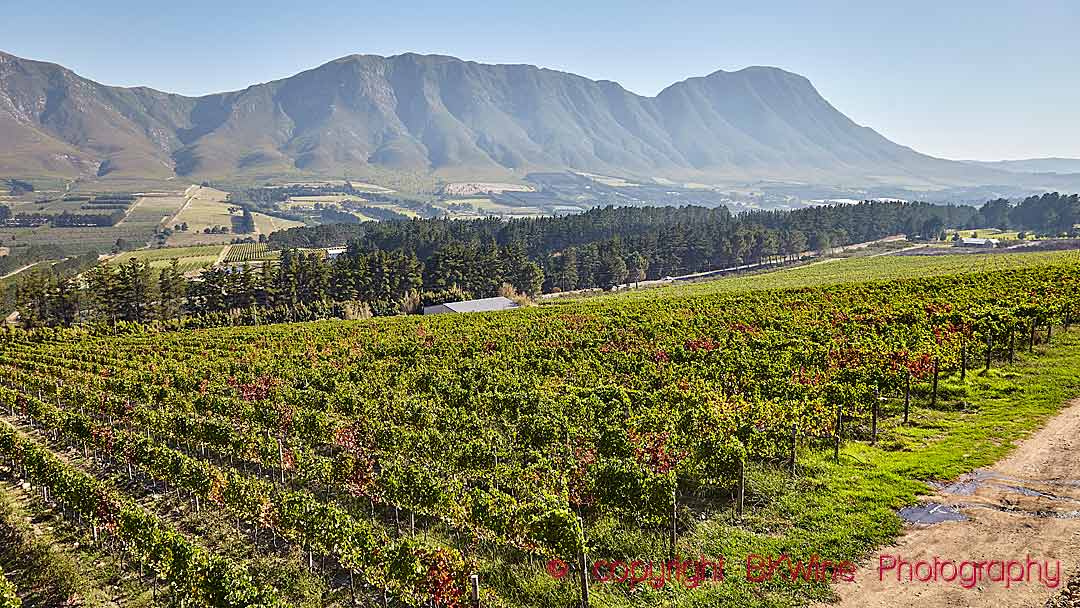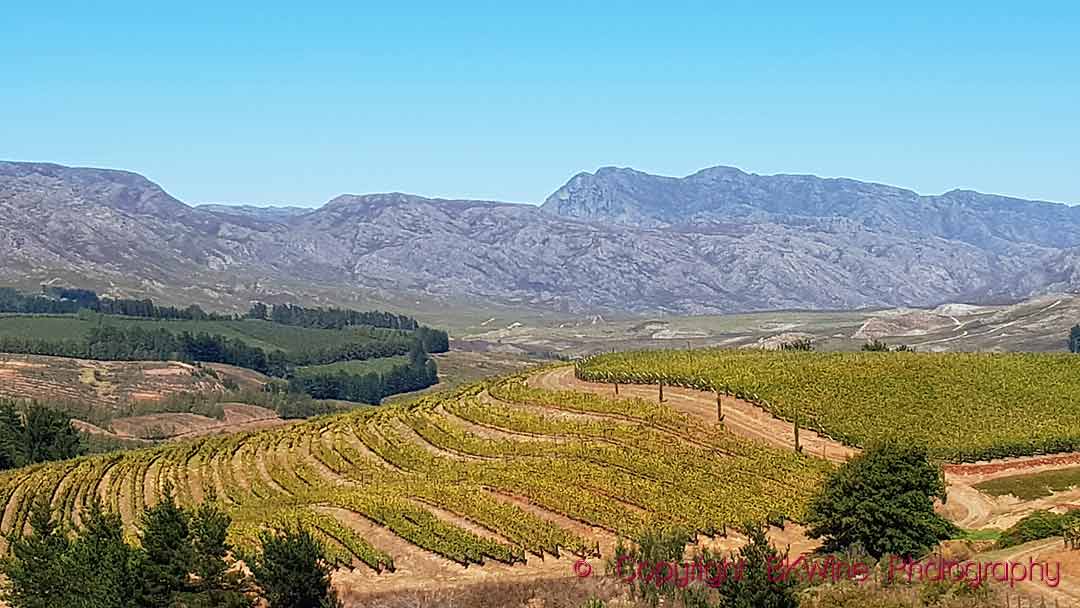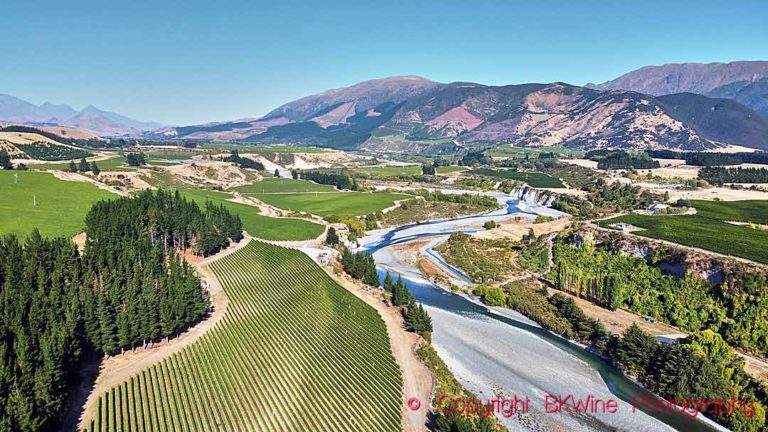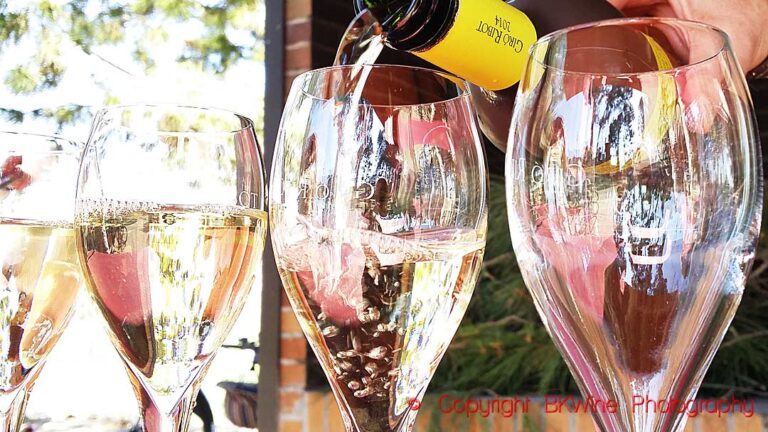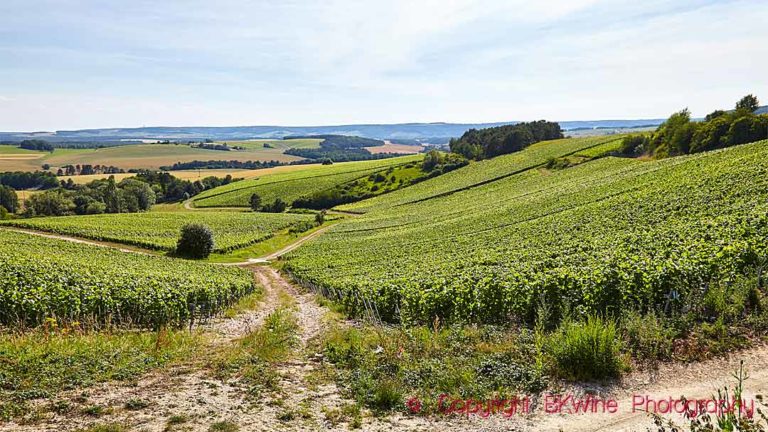The Michelangelo International Wine and Spirits Awards is one of the big wine competitions in South Africa with a few thousand entries. I was part of the jury, the people tasting and judging the wines, in 2022. Over the five days of tastings “my” tasting panel (one of several) tasted almost three hundred wines. We tasted a wide range but focussed on pinot noir, syrah and sparkling wines. It gave me an excellent opportunity to get an overall impression of the wine styles of these categories in South Africa. Here’s what you can expect from them and a pick of some of the best that we tasted.
Wine competitions are curious events. A select group of people taste a large number of wines over a short period of time. In some competitions you discuss and “agree” (more or less), in other you just note your personal scores which are then averaged with the other tasters’. Some competitions are “half-blind”, you know more or less what you taste (for example, white burgundy under 15 euro) although the name of the wine and producer is secret. Other competitions are totally blind; you do not know at all what you taste.
This is a longer version of an article published on Forbes.com.
I prefer the fully blind ones. They are a better judge of the wine’s quality. In half-blind tastings people tend to evaluate the wines’ “typicity” rather than the quality; they think “is this the way it should taste?” rather than “is this good?” The Michelangelo tastings were almost blind. You knew the grape variety, but I preferred to ignore that and just taste the wines as if they were unknowns. Again, the point for me is not to evaluate “does it taste like syrah should taste?”, but to judge the intrinsic qualities of the wine. “Is it good?”
Although tasting wine and rating them is very personal, in most cases the judges on the panels tend to roughly agree, but not always. This was the case in the Michelangelo competition and is also usually what happens in other competitions that I have judged in.
Grape variety as an indicator of style
One often tends to focus on the grape variety when buying or selecting wine. “I want a pinot noir with the pigeon,” for example. That can be a mistake. A pinot from Washington is very different from one from Burgundy. Central Otago in New Zealand is yet another big pinot region with its own specific style. Once, we had one from Patagonia that was one of the most powerful wines we’ve had, not at all pinot style.
That the grape variety is not always a good indicator of style was underlined at the Michelangelo Wine Awards tasting in South Africa where I was one of the judges. (As far as I know, I am the only Swedish taster to ever have judged in Michelangelo.) Wines from different countries and regions often have their own specific style, even if they come from grape varieties that you may think you know.
Here’s a review of some of the styles that you can expect from South Africa and some great wines to look for from the Michelangelo tasting.
South Africa’s most planted grape varieties
The most planted grape variety in South Africa is still chenin blanc with 19,000 hectares.
In second place we have colombard, also a white grape, with 13,000 hectares.
- Cabernet sauvignon is in third place with 12,000 hectares followed by
- Syrah with 11,000 ha,
- Sauvignon blanc with 10,000 ha,
- Pinotage with 8,000 ha,
- Chardonnay also with 8,000 and
- Merlot with 6,000 ha.
(Numbers from 2017.)
South African sparkling wine, Cap Classique
But instead of grape varieties, let’s start with something that is not a grape type. Sparkling wine. South Africa makes quite a lot of sparkling wine, and of very good quality. Here, it is called “Méthode Cap Classique”, “Cap Classique” for short, or sometimes simply MCC, if it is made with the traditional method with a second fermentation in the bottle.
One tends to benchmark all sparkling wines against champagne, which in a way, is a mistake, quality in wine is always a question of personal preferences, but for the sake of reference, I’ll do that here too. Most people have an idea of the style of champagne.
South African MCC is often more full-bodied and fruitier than champagne. If champagne can be very austere and almost astringent, then MCC tends to be more full-bodied, with more ripe fruit and sometimes more aromatic, citrus, flowers. Sometimes they can be almost smoky with ripe apples. South African Cap Classique will delight those who think champagne is too acidic and edgy.
Here are some of the South African sparkling wines that we liked best at the Michelangelo Awards:
- Mariette Blanc de Blanc MCC 2016, Belle Rebelle
- Canto Chardonnay Pinot Noir Brut MCC 2020
- Paul René MCC Brut 2018
- Christiena MCC Brut 2021, Van Loveren Family Vineyards
- Alvi`s Drift Private Cellar, Brut Cap Classique
- Graham Beck Cap Classique, Ultra Brut 2016
- Graham Beck Cap Classique, Pinot Noir Rose 2017
For more on one of the premier sparkling producers in South Africa, read BKWine Magazine’s article: A bubbly ride in South Africa – meet Pieter Ferreira at Graham Beck.
Pinot noir
Next up was pinot noir, the world’s ninth most-planted grape variety. The icon wines here are from Burgundy in France. They are often relatively light in colour with high acidity and plenty of red fruits (cherries, strawberries…), often with a good dose of wood ageing. They can have notes of very ripe fruits and forestland underbrush. American versions tend to be denser and with more ripe fruit. Pinot is not widely planted in South Africa but has had great success on a small scale in the Hemel and Aarde region in Walker Bay on the cooler south coast.
South African pinot noir often shows a very good expression of the grape variety with clean and elegant fruit and little or just a touch of oak ageing character, elegant, clean-cut wines. Delicious drinking when one wants fresh red fruit in the wine and not too much tannins. Here are some of the wines we particularly liked at the Michelangelo Awards:
- Galpin Peak Pinot Noir 2020, Bouchard Finlayson
- Ghost Corner Pinot Noir 2020, Cederberg Winery
- Chamonix Pinot Noir Feldspar 2020, Chamonix wine estate
- Leopard`s Leap Culinaria Pinot Noir 2020
- PF Pinot Noir 2019, Peter Falke Wines
- Pinot Noir 2021, That Wine Demesne
If you want to know more about this grape, you can read the BKWine Magazine profile of pinot noir.
Syrah
Syrah is worldwide a more popular, more planted grape variety than pinot noir, 190,000 ha compared to 115 000 ha. The two big producers are France and Australia, where it is often called shiraz. The yardstick for syrah is often the very distinctive wines from the northern Rhône Valley. They are dense, dark and concentrated. Aromas cover a broad spectrum, from flowery violets but more often toward smoke, charcuteries and even tar, sometimes referred to as “reductive”. But this is a style that is not always found in syrah from other origins, and so is also the case with South Africa.
There are some examples of the powerful and dense, sometimes reductive style of syrah but in general, the wines from here are more focused on the fruit. There is a lot of delicious fresh dark fruit with good concentration and spices in the better examples, rarely overwhelming or over-powering. The grape is sometimes labelled as syrah and sometimes as shiraz, but this is not a good indicator of the style (which it can be in some other countries).
Some delicious examples of South African syrah that we tasted at the Michelangelo:
- Driehoek Syrah 2020
- Holden Manz Syrah Reserve 2017
- Onoma Private Cellar Syrah 2021
- Babylonstoren Shiraz 2020
- Erasmus Shiraz 2020, Cape Wine Company
- Monogram Shiraz 2017, Klein Welmoed Wine and Olive Estate
- Kleine Zalze Family Reserve Shiraz 2018
- Koelenbosch Shiraz 2020, Koelenhof Wynkelder
- Raka Biography Shiraz 2020
- Ridgeback Shiraz 2017
- Cape Five Reserve Shiraz 2019, Stellenview Premium Wines
- Great Five Reserve Shiraz 2019, Stellenview Premium Wines
- St Andrews Shiraz 2019, Wakefield Taylors Wines
If you want to know more about this grape, you can read the BKWine Magazine profile of syrah.
To summarise, each country and wine region has its own style, even if the grape variety is the same. The wines from South Africa are often good examples with clean, elegant fruit expressions of the grape variety. Absolutely worth seeking out and getting to know.
Here you can find more wine recommendations from the Michelangelo International Wine and Spirits Awards. The wine recommendations above all come from the Michelangelo Awards Platinum and Double Gold categories.
Bonus: Here’s a BKWine Magazine guide to some of the other grapes in South Africa. Not entirely up-to-date but still a good guide.
Travel
You can discover many of the fabulous South African wines on a wine tour to South Africa with BKWine Tours, also including Franschhoek, Walker Bay, Elgin, Stellenbosch and much else.
Travel to the world’s wine regions with the wine experts and the wine travel specialist.
The most insightful wine tours. BKWine wine tours.


